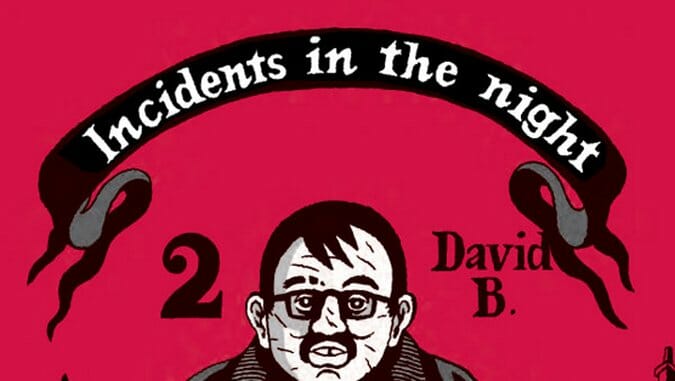Incidents in the Night Book Two by David B.

Writer, Artist: David B.
Translation: Brian and Sarah Evenson
Publisher: Uncivilized Books
 Good luck coming up with an easy summary of Incidents in the Night, David B.’s series of graphic novels. There are elements of a paranoid conspiracy thriller: in the first volume, David B. learns of the existence of a mysterious newspaper and a secret society, and teams up with a morally grey inspector, Commissioner Hunborgne, and a reporter named Marie to investigate them. There’s also an absurdist element: David B. narrates a summary of the events of the first book as a kind of prologue to this volume; towards the end, we encounter this jarring moment: “I am stabbed and thrown into the Seine, but my murder had a strange witness.” There are elements of the supernatural, the metaphysical, and the metafictional all converging on the narrative; the result is often exhilarating.
Good luck coming up with an easy summary of Incidents in the Night, David B.’s series of graphic novels. There are elements of a paranoid conspiracy thriller: in the first volume, David B. learns of the existence of a mysterious newspaper and a secret society, and teams up with a morally grey inspector, Commissioner Hunborgne, and a reporter named Marie to investigate them. There’s also an absurdist element: David B. narrates a summary of the events of the first book as a kind of prologue to this volume; towards the end, we encounter this jarring moment: “I am stabbed and thrown into the Seine, but my murder had a strange witness.” There are elements of the supernatural, the metaphysical, and the metafictional all converging on the narrative; the result is often exhilarating.
-

-

-

-

-

-

-

-

-

-

-

-

-

-

-

-

-

-

-

-

-

-

-

-

-

-

-

-

-

-

-

-

-

-

-

-

-

-

-

-








































